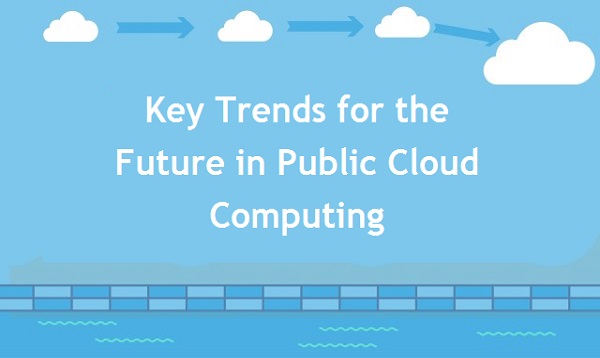In this article we will discuss some of the key public cloud trends and how they are shaping the industry. So stay tuned to know how public cloud computing is redefining the trends that are prevalent in the industry.
The adoption of public clouds by businesses is increasing by the day and entrepreneurs are keener than ever to shift their data to the cloud to optimize workloads. No surprises then why public cloud services like Microsoft or Amazon are awash with takers. It is very common for most businesses to use multiple clouds for empowering their businesses further. They have slowly started to understand the need to abandon a traditional data center. Experts on public clouds from the reputed and popular cloud services provider Rackspace recently observed three key trends which will define public clouds in the future. Cloud computing will enhance future growth of organizations and help them to establish a new business model that will function in ways it had never worked before.
1. It is true that public clouds have distinctive features but performance differences which earlier existed among them seem to be gradually diminishing. While earlier Google was primarily noted for networking and storage, Microsoft was the go-to company for business solutions and Amazon Web Services specialized in AI and machine learning. So, companies which are working on developmental projects which need instant server provisioning will find the AWS solutions to be best suited for their needs. This implies that planning process today has become the most critical function of any cloud journey. There are very few enterprises which have the power to go through all the functions and features of every public cloud solution to identify what suits specific business applications the best. You will therefore find the growth of companies which will help you achieve this seamlessly.
The future of cloud computing will be the driver of changes and development in the field of cloud services.
2. It is also believed that containers will slowly make their way into the cloud hosting world and it will ensure higher flexibility amongst multiple clouds. These will integrate the applications in ways to make them more reliable and faster. To optimize workloads, a multi-cloud strategy works best while containers will give you a simpler way to move the applications around, to decide where these will fit the best. Kubernetes is currently available as container orchestration engine which lets portable workloads that run across many clouds to take advantage of one another’s functions. Businesses can check for themselves whether a certain Kubernetes container works best on Google or Azure or AWS. Moreover, businesses can also shift a container which runs in the AWS to another cloud. In short, containers will guarantee higher efficiency allowing developers to transfer applications across all platforms. You have to look for cloud providers which will help their clients with such containers and the Kubernetes and also offer specialized services apart from the key functional advantages.
3. It is believed that the public cloud is going to support machine learning in the future. Machine learning has been playing a key role in all kinds of innovations ever since the beginning of this year. However, only handful of businesses is being able to implement this learning successfully in their production environments. So, the public cloud is expected to help the others to learn how to adapt machine learning to their businesses. Machine learning will need many computing resources and the cloud will enable instant provisioning of such resources. You can get scalability from the public cloud for testing and running machine learning models. You can also benefit from pre-built learning models which the public clouds offer to carry out basic machine learning tasks, such as video analysis and image recognition. Although you will find API technologies for these, cloud vendors are competing against one another to enhance their machine learning prowess. The Sage Maker feature from AWS is a proof of this drive amongst public clouds while Deep Lens is hardware with built-in machine learning to access pre-modeled data. Soon enough, machine learning will be offered as a service by cloud providers. So, when a person can use Alexa from Amazon to order goods for the house or play music, he will want to enjoy this experience even at work.
As public cloud computing makes it way in the market, things will undergo key changes and help us reshape the market.
Besides these key trend in pubic clouds, it is also believed that edge computing will find more use in 2018 because there will be a boost in the growth of more smart wearable technologies like hear monitors and health trackers. As there is the emergence of more and more cutting edge technologies, security will be of prime concern for businesses for their protection and sustenance. Ransomware attacks have become commonplace now and focus on security will only become more pronounced than even before for businesses.
For Interesting Topic : What are cloud computing services?






 Live Chat
Live Chat
Thanks for sharing